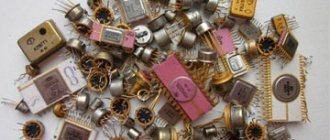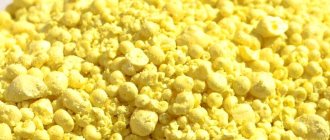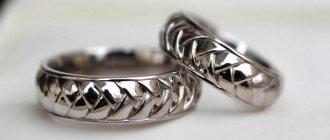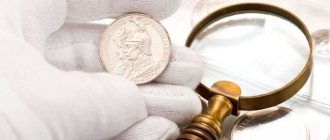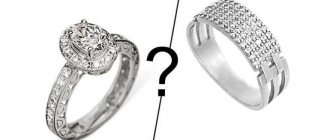Silver is gradually becoming the most popular precious metal. Some sources already say with confidence that gold is receding into the background, giving way to gold. Of course, the issue of carrying out refining procedures in relation to silver is becoming more and more urgent. It is the details of this procedure at home that will be discussed in this article.
How to remove silver from contacts: various ways to obtain the precious metal
Over the past decades, the rapid development of the electronics industry has led to a decrease in the use of precious metals in the production of components and semiconductors.
However, during the existence of the USSR, precious metals were one of the main and extremely important components of manufactured radio electronics.
There is a specialized reference book for the content of precious metals, from which you can find out the list of precious elements that make up a particular electronics component.
The most common noble metal in radio components is technical silver. It is pure metal with minor impurities or no impurities at all.
Thus, technical silver is almost always a high-grade metal of 999 purity. In this article we will tell you where it is found and how to remove this metal from the contacts and separate it from the copper at home.
Nitric acid for silver mining
You can extract silver from radio components such as contacts yourself using nitric acid. Radio components such as contacts do not contain impurities of other noble group metals, therefore they react faster than other elements of the parts.
For extraction you will need a heat-resistant flask, protective gloves and nitric acid. The sequence of actions is as follows:
- Place the contacts at the bottom of a special flask and completely fill it with nitric acid. The liquid must be heated until the release of brown gas completely stops. As a result of the increase in temperature, the contacts should completely dissolve.
- The resulting solution must be filtered.
- A pre-prepared 10% salt solution should be poured into the filtered liquid, which is prepared from 100 grams of salt diluted with 1 liter of distilled water, but the liquid is not brought to a boil, and the salt simply dissolves. After the reaction, a white precipitate can be seen at the bottom of the container - this is silver chloride that has separated.
To restore silver, you should resort to one of the following methods: subject silver chloride to a reaction in an alkaline environment with aluminum or zinc powder, with hydrogen peroxide. An alternative method is to fuse it with sodium bicarbonate (better known as soda) at high temperatures.
It is possible to clean the residue from impurities of other noble metals by adding a little hydrochloric acid to the silver.
Where is this precious metal found?
For precious elements in electronics, properties such as thermal and electrical conductivity, as well as light reflection, play an important role.
Thus, noble metals are used in the following radio components:
- Microcircuits . The most promising options for metal mining are Soviet-made microcircuits. It is preferable to disassemble microcircuits of the 564, 530, 133, 134, 142, 155 and 1533 series.
- Capacitors . In addition to silver, palladium, platinum and gold can also be found here. The volume of certain metals depends on the type of case (ceramic, yellow, silver and tantalum), as well as on the year of manufacture of the devices. These components were used in various computers, electronic devices and automatic telephone exchanges, as well as in tube televisions and tape recorders.
- Resistors . The basis of these radio-electronic elements is silver. The most cost-effective components are resistors of the PTP, PPBL, PPML and 5K series. It is recommended to collect Soviet resistors produced before 1982. The key difference between this component is the diamond-shaped marking.
- Connectors . These devices, both Soviet and foreign made, are suitable for extracting silver, technical gold and other precious metals. However, the content of precious metals in foreign-made components will be approximately five times lower.
- Transistors . Another electronics component containing a relatively large number of noble elements. The most preferred for silver mining are transistors with the index 2T935A, 2T944A, 2T945A and 2T998A.
In addition to the above radio-electronic components, technical silver may be contained in:
- generator lamps;
- LEDs;
- switches;
- buttons.
How to obtain silver from radio components at home?
Silver is a highly inert metal, which means that this element has weak reaction-chemical properties. In other words, it is not easily dissolved.
Under normal conditions, silver does not dissolve in hydrochloric and sulfuric acids, as well as in aqua regia , like gold.
However, this metal has good solubility in oxygen-containing nitric acid.
The answers to the questions of how to isolate, smelt or otherwise extract technical silver from radio components come down to three main methods :
- Mechanical processing is the simplest method, suitable for some types of contacts that can be easily separated using pliers and wire cutters.
- Heat treatment - in cases where it is not possible to extract silver mechanically, there is an option to resort to using a gas blowtorch. When the heat is high, the silver elements can be easily separated from the holder using available means.
- Treatment with nitric acid - this method is used to extract precious metals from massive parts of radio-electronic parts. The method requires high care and accuracy at each stage of processing.
Heat treatment
Smelting is suitable for extracting precious metal from silver contacts where the silver is soldered onto the contact holder.
The tools you need to use are a gas torch or cutter, as well as a knife with a wooden handle .
Use of silver in electronics. Technical silver in the USSR
Silver conducts electricity and heat better than other metals. It is inert to water, air, and some gases. It is used in a wide variety of industries, the list of which is constantly expanding.
The precious metal is used to create jewelry, in the production of contacts for various electrical products, for minting coins, as a means of investment, in the production of mirrors, clothing, batteries, in the chemical industry, and photography. The volumes of lunar metal attributable to the industrial sector exceed 70% of global production.
Silver alloy wire
During the Soviet era, they did not skimp on silver in the production of radio components. The metal used in this area is called technical. This is a special alloy containing copper, nickel, tin, aluminum, cadmium as impurities. The number of additives is not large, usually does not exceed 0.2% of the total composition. The bulk of it is pure silver.
The exception is magnetic and non-magnetic samples of technical precious metals. Here the silver content varies from 60 to 80%.
If jewelry metal performs a decorative function, then technical metal must provide electrical conductivity and reflection of light.
Sales of the resulting metal raw materials and its average price per gram
For the subsequent sale of precious metal from contacts, you need to know its resulting mass and sample. As mentioned earlier, technical silver used in radio electronics is a pure metal of 999 purity.
Accordingly, metal obtained mechanically or by smelting will be 999 fine. If silver was extracted chemically using nitric acid, the output would be a metal of approximately 980 fineness. This is due to the copper impurities present in silver.
The direct cost will depend on two main factors :
- percentage of pure silver in the resulting alloy;
- places of sale of precious metals.
For 2021, the price for 1 gram of technical silver scrap is as follows :
- sample 999 – from 24 to 35 rubles;
- 980 – from 21 to 27 rubles;
- 960 – from 16 to 22 rubles;
- 925 – from 9 to 11 rubles.
When selling more than 1 kg of precious metal, you can earn 2-4 rubles more for each gram of it.
It is also most likely that on the Internet, using thematic sites and forums, you can find buyers who are ready to offer a higher price for those. silver from contacts than from a pawn shop.
Silver in starter contacts
Today is my day to get rid of old junk. After sorting, several magnetic starters and a circuit breaker fell into this category; you can see them in the photo. So, we have three third magnitude starters PME and PML, two fourth magnitude starters and a 40 Ampere circuit breaker. However, simply sending them to a landfill would be an unforgivable waste, so first I will extract everything more or less valuable from them. After a couple of hours of working with a screwdriver, such a bunch of contact pads with silver-containing contacts formed. To some it will seem blasphemy to spoil something for the sake of a few grams of silver, but please take into account that all the devices are morally and physically outdated and it is impossible to find a use for them today.
The next question - how to separate silver from the contacts - is easily resolved. Some contacts can be easily separated mechanically using wire cutters and pliers, others will have to be unsoldered, which I will do tomorrow using a blowtorch. By the way, I do not recommend using a gas stove for this purpose due to the release of toxic cadmium fumes. The contacts will be unsoldered, but your health will definitely not increase.
Once upon a time, the local telephone exchange replaced outdated relay equipment with digital ones. Relay assemblies were then simply thrown away. I picked up a couple and in my spare time I picked out about 100 grams of silver, which is what you see in the photo. It can be seen that the contacts of one electromagnetic relay of this type contain 0.077 g. silver (there are four silver solderings), this is pure silver of standard Cp999, that is, it does not need further cleaning.
The contacts obtained from magnetic starters must be refined. I refining silver from contacts according to the classical scheme:
1. Dissolution of contacts in nitric acid (release of toxic nitrogen dioxide, carried out under draft or in the open air).
2. Preparation of silver chloride.
3. Reduction of AgCl to metallic silver.
The first point is clear - add diluted acid to the contacts until they are completely dissolved.
Point two - we obtain silver chloride by adding hydrochloric acid (HCl), or, somewhat worse, a solution of ordinary table salt (NaCl) to solution (1) until a white cheesy precipitate stops forming. Filter the precipitate and wash thoroughly. When exposed to light, the precipitate darkens as the chloride is reduced to metallic silver (the basic process of photography).
Silver contacts: how to remove?
Many people still keep radio components from the USSR era in their homes. They contain silver contacts that can be removed at home. To obtain precious metal, you will need to study the procedure and prepare special items.
Peculiarities
Contacts of electrical components may contain pure silver. There are several types of connections.
- Those that are not magnetic . The silver content in this group is the highest.
- Magnetizable . They contain the least amount of pure metals.
- Copper . Soldering is a copper plate that is coated with a small layer of silver.
Silver contacts are used in low power devices. Pure metal can be extracted from:
- electromagnetic starters;
- electric machines;
- relay;
- temperature sensors;
- silver-zinc batteries.
Rules of care
You need to keep an eye on the silver contacts. Care involves periodically checking their condition. If they are dirty, you should clean them with a suede or cloth cloth . It will need to be moistened a little in gasoline. Can be cleaned with a stiff hair brush.
How to separate silver?
It has long been practiced to extract pure silver from contact alloys. To extract pure metal, special purification techniques called refining are required. This procedure is divided into several steps, the result of which is always the release of silver.
Although refining is an industrial procedure, you can solder the precious metal yourself at home. There are different ways.
Cupellation
Silver can be separated from low-grade alloys through cupellation. This method is based on the ability of molten silver and lead to begin to oxidize in air. With such contact, the metal will separate. To work, you will need a special furnace equipped with a bowl-shaped crucible. The bowl should have a marl coating based on porous limestone clay.
The process is divided into several stages:
- the oven is heating up;
- then an assay crucible is placed in it, which already contains technical silver and lead;
- heat the crucible until complete melting occurs;
- After this, air masses are released into the furnace.
The process includes a thermal reaction. When it runs out, you can remove the crucible and pour its contents into molds.
After cooling, the alloy takes on a rainbow color scheme. This indicates that, in addition to silver, it contains other precious metals.
Electrolytic method
To extract metal in this way, you will need special plastic or sandstone cells with silver nitrate. The precious metal content in the liquid is at least 50 g/liter. Contaminated silver will be used as the anode. The cathode in this situation is stainless steel, cut into strips of small thickness.
The anodes are placed in textile bags. These bags will then collect contaminated silver particles that were unable to dissolve. Silver macrocrystals will be deposited in the cathodes. They will grow towards the opposite pole until a short circuit occurs. To prevent a short circuit from happening, the branches of the crystals are broken during mixing of the solution . Such crystals independently settle to the bottom, from where they are removed. Ingots can be smelted directly from these components.
Metal dissolution
The process begins by mixing acid and water. The acid must be diluted with water in a 1:1 ratio, stirred with a quartz stick and silver should be added to the mixture at the rate of 50 g of silver per 1 liter of water.
Attention: the acid pours into the water, and not vice versa; in addition, you must wear gloves and safety glasses. During the chemical reaction, the solution should turn blue. The process can take from several hours to days. The result is silver nitrate.
It is recommended to carry out refining outdoors or in a well-ventilated area.

